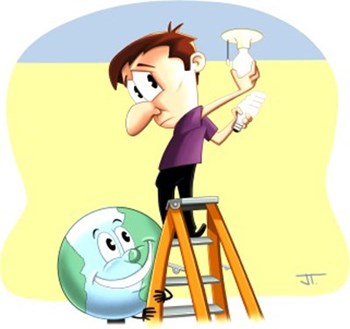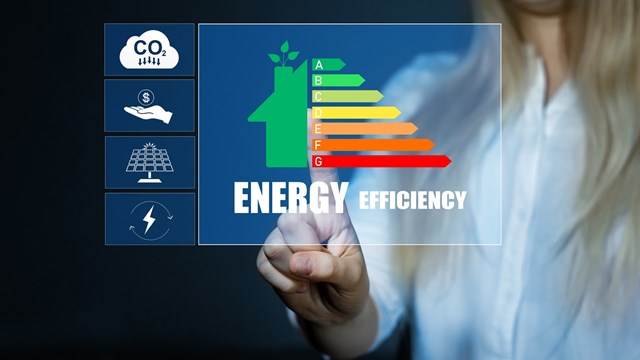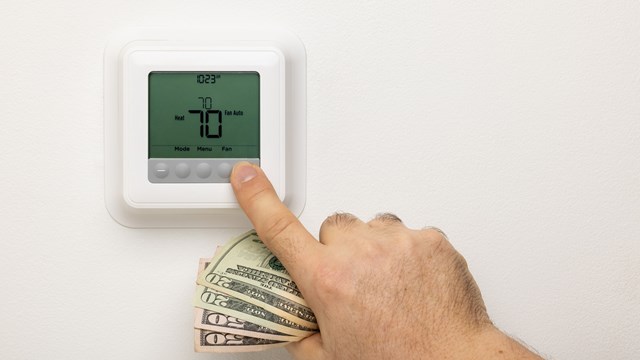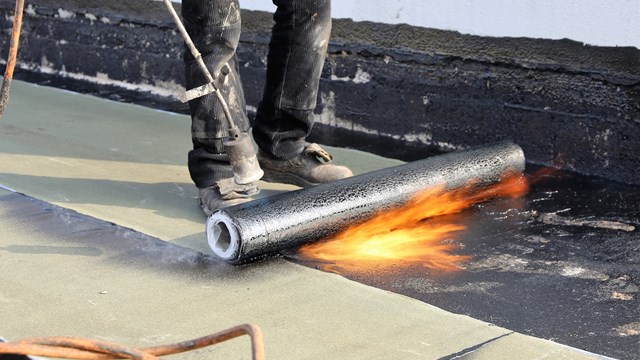
These days, it seems like nearly everyone is making a move toward being more environmentally friendly. So-called "green" architecture, products and tips are everywhere. While many of these moves toward green living require the help of a professional, there are steps board members, resident owners and shareholders can take on themselves to save energy and lower costs.
The benefits of these simple steps are numerous, says Bob Lesch with Public Energy Solutions in Englewood.
"You'll help reduce the effects of global warming and make your property more 'green' and environmentally-friendly. It will also save money and energy, and prevent brownouts and blackouts by eliminating unnecessary electric load," says Lesch.
Getting Started
Look around: you probably already have a good sense of what goes on in your building. If not, take a walk through and observe things like the lighting in your common areas.
"Your best tools are really your eyes and knowledge of your own buildings," says Doyal Siddell, public information officer at the New Jersey Board of Public Utilities. "Board members and building personnel already know what lighting systems they already have, or if they have nice tight seals on outside doorways. You don't need specialized tools at this point, just see what you already have."
"There are quite a few simple things that can be done, including installing programmable thermostats and installing fluorescent light bulbs," says William Amann, P.E., LEED AP, treasurer of the New Jersey Chapter of the U.S. Green Building Council and president of M&E Engineers, Inc.
For ideas, Amann recommends that board members start by looking online at www.njcleanenergy.com/residential /tools-and-resources. "Go to Residential On-Line Analysis, which will lead you through an analysis of your home or building, and provide recommendations for energy conservation measures," he says.
Another resource is Energy Star, at www.energystar.gov, a joint program of the U.S. Environmental Protection Agency and the U.S. Department of Energy. The Energy Star label on products and appliances has become a familiar sight in recent years, and helps consumers see exactly how energy-efficient the product they're purchasing is. The website also offers advice and tips on energy-efficient practices.
"Board members and homeowners can also contact their local utility company, the New Jersey Smart Start Program or the New Jersey Board of Public Utilities (BPU) for information or energy-saving ideas," says Lesch.
Save on Lighting
Without a doubt, lighting can make a big impact on the amount of energy used by any building.
"Bulbs in hallways and other areas where the bulbs burn much or all the time are obviously the most important ones to replace. But almost all bulbs besides those rarely turned on will pay back the additional cost of the high efficiency bulb," says Amann.
"Compact fluorescent lamps (CFLs) can be purchased and installed very easily by individuals and board members. CFLs will last 10 times longer and save up to 75 percent of the wattage consumed, based on a 60-watt incandescent versus a 15-watt CFL," says Lesch.
Overhead lighting is not the only type that should be addressed. "Buildings are all going to have exit lights, whether they're low–or high-rise. Check to see if your exit lights are LEDs [light-emitting diodes]. If not, get a local electrical vendor to change out the exit lights. It will pay for itself within the year," says Siddell.
In addition, in high-rise buildings, wherever there are exit stairwells, there will be light fixtures that by fire code must be lit 24/7. "A lot of buildings use two-step fixtures for emergency exits, and in most codes, they're perfectly allowable. They have two lights, one is very low and uses much less energy and is on all the time. There is a sensor that will turn the higher light on whenever someone enters the area," says Siddell.
While surveying the type of lighting used in common areas, take note of the type of fixtures you're dealing with. Often, changing a bulb is a quick fix any board member, super or member of the building staff can handle.
"If you see circular-recessed fixtures and if they have a regular flood light in there, it's probably about a 65-watt light bulb. You can easily replace these with a CFL, which generally look like skinny tubes in a spiral. They last many times longer than regular flood lights. This means that whoever is handling the maintenance can go to take on other projects, and not spend as much time changing lightbulbs," says Siddell.
An added benefit of CFLs is that they can also improve safety. "They have a higher or better color rendition index (CRI), so it's much easier to see color and texture. If you're using these in hallways, parking areas and so on, these bulbs are safer because you can better see what's there," says Siddell.
You'll also want to assess various rooms that are seldom used. These might include small meeting rooms or larger rooms that occupants can use for parties, as well as public bathrooms or custodial closets.
"All of them will have lights, and in those rooms, a nice thing to put in is an occupancy sensor. These have two sensors contained in something that looks like a light switch. They sense motion and body heat. If someone opens the door, a light will come on. Body heat will cause the light to come on and stay on. When the person leaves, the sensor can be set to turn off after a period of no one being in the room," says Siddell. "Basic occupancy sensors are relatively inexpensive—about $60—and can be installed by local custodial staff."
Inside Individual Units
Shareholders and unit owners can take steps on their own to reduce energy consumption. Although policies and culture are different in each community, in most, tenants or unit owners pay for their own electricity.
"You can make recommendations to residents on ways to save energy," says Siddell. "CFLs can be screwed into room lamps and anywhere a regular lightbulb already exists. Years ago, CFLs had a bad reputation and they took a while to turn on. People thought they were too bright and didn't like them in their living spaces. Those issues have become overcome, and you can now get CFLs that are softer as well as instant-on CFLs. Some have the tubes inside a translucent case so the bulb doesn't look funny or put out a harsh light. You can always ask the staff at a store for a demonstration."
Additionally, in each residence, Lesch recommends the use of window and door caulking and weather-stripping to keep heat in during the colder months, and out during the summer.
If your association or building has a newsletter, use it to pass along energy-saving tips and ideas. For example, says Siddell, "Advise residents that every time they buy anything new that is going to consume electricity in a unit, such as a computer or refrigerator—always look for the Energy Star label. It varies based on product, but categorically, even if there's a marginal cost difference for a homeowner to buy the Energy Star appliance, they will make money back sooner than if they put it into a savings account."
Reducing Water Usage
A condo or a co-op can also become more energy efficient by making a dent in the amount of water being used.
"Reducing the water temperature to the minimum to meet the load is one of the best methods to reduce energy use. Hot water systems lose energy to their surroundings, so turning off recirculation pumps when they are not needed is one easy method. In some instances, replacing a central hot water system with point-of-use heaters is not difficult, and can provide a good payback," says Amann.
And don't forget about the bathroom. Toilets, especially if they are older, can also use too much water.
"If the existing water closets and urinals are older, simply replacing with newer reduced flow fixtures can really reduce the water and sewer bills. And a company from Australia called Caroma is now selling their dual-flush toilets here, which use just half the flow (0.8 gal) when a full flush is not needed," he says.
Installing low-flow showerheads and low-flow aerators can also make a big difference in water usage.
"Aerators passively pump air into the stream of water. Residents get a better stream of water for washing hair, rinsing hands and so on. It's a better, stronger flow of water. The other advantage is that it does a much better job of mixing the hot and cold water," explains Siddell. "You'll save water because less water is being pumped out, and save on the water bill and sewer bill. And because you're using less hot water, you'll save on the energy that it takes to make the hot water, because you're using less of it."
Although it is up to each individual board, Siddell notes that many times, building management makes a decision to buy a stock of low-flow showerheads and aerators. They can make them available to tenants at no cost, as a way to benefit the building or community as a whole.
Incentives: What's In It For Me?
While implementing energy-saving solutions means you're being more environmentally friendly, it also helps your bottom line and at the same time can boost the value of your co-op or condo.
And if you're balking at shelling out money for improvements, Amann notes that the New Jersey Clean Energy program includes SmartStart incentives to offset professional design costs, for purchasing high-efficiency equipment and for installing renewable energy systems, such as solar cells. There is also a federal tax incentive.
"There are still buildings out there where the heat blasts uncontrolled, and tenants open the windows to be comfortable," says Amann. "This is literally throwing energy out the window. Separate controls and individual metering helps a great deal, but energy consumed by the common areas, and the unmetered services, are costs that eventually hit someone's bottom line, either directly or indirectly. Making the building efficient certainly adds to its financial value as a higher-performing asset."
By implementing a few energy-saving solutions, you're not only reducing your own energy consumption: You're helping improve your bottom line and increasing the value of your home. And with a little effort and some elbow grease, your building or association can make great strides toward saving energy costs, reducing your energy use and making your co-op or condo more environmentally friendly in the long run.
Stephanie Mannino is a freelance writer and published author living in Hoboken, New Jersey.






Leave a Comment